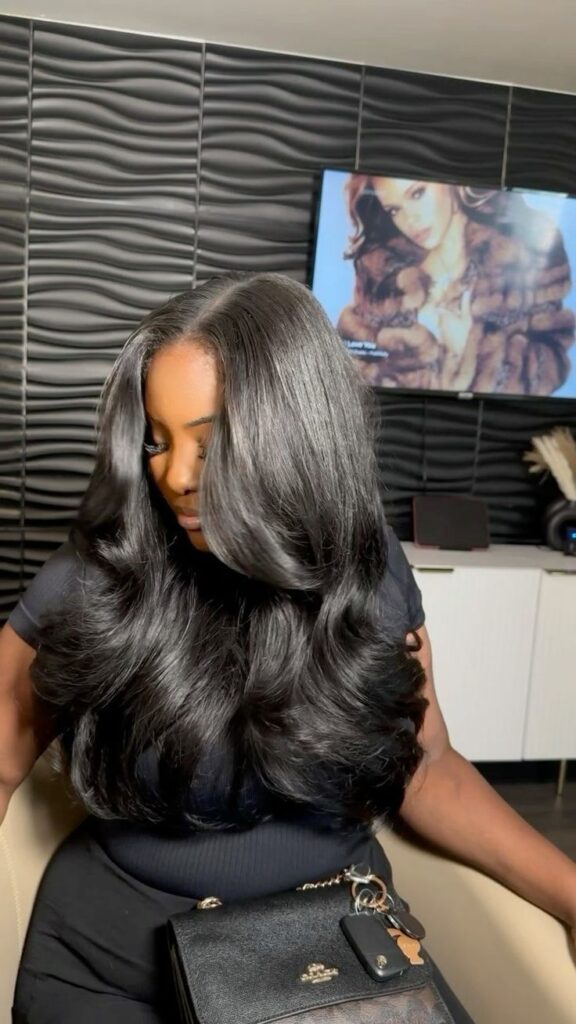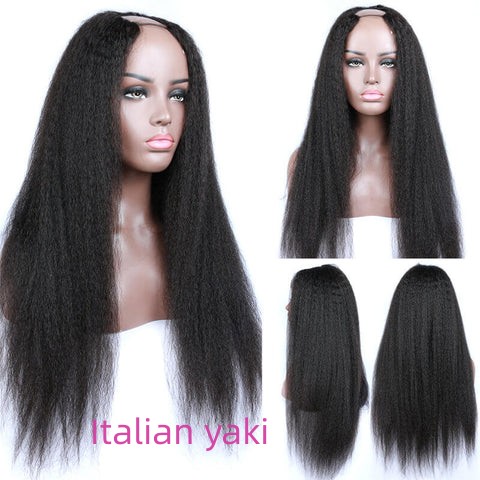The history of hair styling is as old as civilization itself. From ancient Egyptian wigs to the elaborate hairstyles of the Renaissance, hair has always been a powerful symbol of identity and social status. In modern times, hair choices have continued to evolve alongside advancements in technology and changing cultural trends. Whether you lean towards a sew in vs wig, these choices were initially predominantly used for functional purposes, such as concealing hair loss or adhering to societal norms. However, today’s hair choices are more about personal expression and convenience.
From the world of intricate braids to the chic sophistication of bob cuts, the realm of hairstyling offers a plethora of choices. But for many, the debate narrows down to a pivotal decision: sew in vs wig?

Sew in vs wig
When deciding between wigs and sew-ins, it’s essential to weigh the pros and cons of each option to determine which best suits your lifestyle and preferences when considering sew ins vs wigs.
Wigs:
Pros:
Versatility: Wigs offer a wide range of styles, colors, and lengths, allowing you to change your look as often as you like without committing to a permanent change.
Convenience: Many wigs, especially those with lace fronts, can be applied and removed easily, making them a convenient choice for busy individuals.
Protection: Wigs can protect your natural hair from heat damage and environmental factors, promoting healthier hair growth.
Cons:
Maintenance: Lace front wigs require regular maintenance, including proper adhesives and careful cleaning to avoid damage.
Discomfort: Many users find lace wigs uncomfortable due to sweating and the irritation caused by adhesives, leading to itching and allergic reactions.
Cost: High-quality wigs can be expensive, and the ongoing costs of maintenance and adhesive products can add up quickly.
Sew in vs wig
Sew-Ins:
Pros:
Natural Look: Sew-ins provide a seamless blend with your natural hair, creating a more realistic and natural appearance.
Durability: Sew-ins are a more permanent solution, typically lasting several weeks to months with proper care.
Comfort: Without the need for adhesives, sew-ins are generally more comfortable to wear and cause fewer skin irritations.
Cons:
Time-Consuming: The installation process for sew-ins is longer and often requires a salon visit, which can be time-consuming and costly.
Hair Damage: If not installed or cared for properly, sew-ins can cause tension and damage to your natural hair, leading to breakage and hair loss.
Limited Styling: While sew-ins offer a natural look, they are less versatile in terms of changing styles quickly compared to wigs.
Understanding the pros and cons of wigs and sew-ins can help you make an informed decision about which option aligns best with your needs and lifestyle. However, personal experiences often play a significant role in shaping these choices in the sew in vs wig debate.
Pros and cons of lace front wigs
As someone who has experimented with various hair styling options, I can attest to the ongoing battle with lace wigs. While the initial appeal of lace front wigs is undeniable—they offer an array of styles and the ability to switch up your look in minutes—the practical challenges can sometimes outweigh the benefits.
One of the most significant issues with lace front wigs is the maintenance required to keep them looking flawless. The adhesive glue used to secure the wig can be temperamental, especially when exposed to sweat. My workouts often resulted in the glue weakening, causing the lace to lift and requiring frequent touch-ups. Additionally, finding the right glue that balances hold with comfort is a constant struggle. Some adhesives can cause allergic reactions or severe itching, which becomes uncomfortable over time.
Moreover, lace front wigs are not the most budget-friendly option. Considering the cost of high-quality wigs, combined with the expenses of maintenance products and professional services for application, it becomes a significant investment. And despite these efforts, the discomfort of the lace rubbing against the scalp and the inability to wear the wig continuously without breaks can be discouraging when choosing sew in vs wig options.
U part wig
However, whether you choose wigs, sew-ins, the key is personal empowerment. Your hair choices should make you feel confident and comfortable in your skin. In this spirit, exploring new hair options like U-part wigs can offer a flexible solution for those seeking a balance between wearing wigs and showcasing their natural hair.
U-part wigs provide a versatile and user-friendly solution that bridges the gap between traditional wigs and sew-ins.
For those who find the commitment of sew-ins daunting or the maintenance of lace front wigs tedious, U-part wigs present an exciting alternative. U-part wigs are designed with a U-shaped opening at the top, allowing you to leave a portion of your natural hair out while wearing the wig. This design offers a natural look with the convenience of a wig similar to sew in vs wig options.
The flexibility of U-part wigs cannot be overstated. They enable you to achieve various hairstyles with ease, from ponytails to loose waves, all while maintaining the appearance of natural hair growth from your scalp. Moreover, since U-part wigs do not require adhesive, they are more comfortable and less likely to cause skin irritations or allergic reactions.
Another significant advantage of U-part wigs is their ease of application and removal. They can be quickly taken off at night, making them a practical option for people who do not want to sleep with a wig on. This feature not only adds to the comfort but also reduces the risk of hair damage due to prolonged wear.

conclusion
Whether you prefer the versatility of wigs, the natural look of sew-ins, or the flexibility of U-part wigs, remember that your hair choices should ultimately make you feel confident and comfortable in your own skin.
Helpful links: